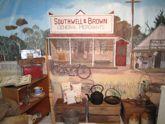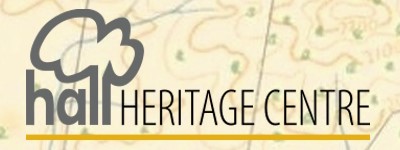Mardardy, Ellen
Family background
Ellen 'Nellie' Mardardy was born in Sydney in 1868, third of four children to John William Mardardy, operator of a Turkish bathhouse, and Fanny nee Cranley. In 1877 her father advanced from manager to proprietor of the bathhouse or 'sanitary institution' (also Ellen's childhood home), noted for his services with 'many cases of chronic complaints being cured' ['Freeman's Journal' (Sydney), 7 July 1877, p. 15]. Sadly, Ellen's mother died the same year, followed three years later by her father leaving 12-year-old Ellen and her siblings orphaned, (and raising a question about the health effects of residing at the bathhouse). The children were however provided for, with John Mardardy bequeathing each the rental income from various properties, stipulating in Ellen's case that the inheritance was 'for her sole use and profit ... without any claim ... by any husband she may marry'. Four years later she commenced teaching.
Pupil teacher: Bullanaming Street (Redfern West), Ashfield, & Summer Hill Public Schools
In April 1885 Ellen, now 16, was provisionally appointed Pupil Teacher at Bullanaming Street (Redfern West). Her position was confirmed after four months, the principal teacher reporting she was 'very efficient and useful', diligent with her homework, but perhaps of weak constitution. Shortly after this Ellen was moved to Ashfield where she remained two years, gradually progressing with her training and being recognised at one point for her assistance at a school fund-raising concert ['Sydney Morning Herald', 13 June 1887, p. 3]. In March 1888, she was moved to Summerhill, by now promoted to Pupil Teacher Class II. She suffered some ill health over the next five months and was medically recommended to have a 'change of air' so, although still having a year's training to complete, she applied for appointment as teacher of a small school, adding that she could no longer reside with her brother as he would soon marry. Her request received favourable consideration and while awaiting a country appointment she was given a one-month position at Nowra Public School, then a six-month situation at Kegworth Public School in Sydney.
Hanover Provisional School
In October 1889 Ellen was appointed inaugural teacher at Hanover in the Bathurst district, where lodgings were reportedly available at 'a comfortable and respectable place' about 1½ miles from the school. The new school commenced with an enrolment of 29 students and was soon recommended for conversion to a Public School. Ellen, however applied for removal stating there was no longer any suitable accommodation.
Rossi Public School
In January 1890 she was given a temporary appointment at Rossi, south-east of Queanbeyan. Immediately after arriving she applied for removal stating, 'the place is altogether unsuitable for a Lady Teacher', but was obliged to stay six months. In June she submitted a medical recommendation for a change of situation, her physician stating that she was 'suffering from the effects of an unsuitable diet – especially the almost entire absence of fresh meat and vegetables'.
Lerida Provisional School
Ellen was then appointed to Lerida near Collector, but was unable to take up duty until recovered from surgery for a gum abscess. After three weeks' leave, she travelled to Lerida where residents had started to complain about the lack of a teacher. Her health appears to have improved and at the end of the year, with her practical skill estimated at 'Tolerable to Fair', she was permitted to sit a classification exam. Various improvements to the school had been completed in this time including the installation of a tank, repairs to windows, desks and door, as well as the provision of extra seating. There was also a successful end-of-year school picnic at which '...the visitors spoke in high terms of the general conduct of the school', describing Ellen as 'a young lady of ability ... worthy of a higher class school' ['Goulburn Evening Penny Post', 20 December 1890, p. 6]. This praise perhaps lessened her disappointment at failing the examination she attempted soon after the picnic. Despite her popularity, in January 1891 Ellen asked for removal, describing Lerida as 'lonely and difficult to access' and requesting a position 'more convenient to the railway, and if possible nearer home', although there was little possibility of gaining such a situation without a classification. She was however moved three months later in a teacher exchange the inspector hoped would 'fairly meet her wishes'.
Gungahleen Public School
Ellen's next appointment was at Gungahleen, about ten miles from the railway at Queanbeyan, in an exchange with Mary Nolan who had asked for a situation allowing her to lodge closer to school. Ellen was instructed to take up duty after the Easter break, but instead applied for three weeks' absence 'suffering from severe headache', and renewing her application for a school nearer Sydney. The inspector, unconvinced of Ellen's illness and of the opinion that she had been too frequently moved already, recommended she visit a Government Medical Officer to validate her illness and to report on whether she was fit to continue as a teacher. The outcome of this was that her leave for 'Bronchitis and Gastric Catarrh' was approved, and she was found fit to continue thereafter.
Ellen ultimately took up duty at Gungahleen at the beginning of May 1891, the school having been closed almost a month in her absence. Despite her delayed start, she appears to have soon settled to duty, as indicated by a declaration at an Arbor Day picnic a few months later, that she was 'a universal favourite with young and old' ['Goulburn Evening Penny Post', 27 August 1881, p. 4]. Eight months later Ellen, now 23, married teacher Henry John Knoblanche, then in charge of Canberra/Nerrabunda (Long Gully) half-time school, after which she continued teaching. A month later she required four weeks sick leave, with the Gungahleen school to be 'kept in operations by her brother Mr J Mardardy, to the satisfaction of the parents'. Three months after returning to duty Ellen tendered her resignation, her final day being 30 September 1892, having completed seven years' service across nine schools.
Later life
Ellen's married life involved several locations as determined by her husband's teaching appointments. They were initially in Canberra, with their first child born there in 1893, and Ellen likely teaching sewing at the school as expected of a teacher's wife. Henry was next appointed to Glanmire in the Bathurst region, where he was unfortunately suspended from duty after six months, due to a complaint from local resident and well-known politician, the Hon. Edward Coombes MLC. The suspension was mercifully short-lived, with Henry soon appointed to Bindogundra (Bindogandri) in the Parkes district, but his family's financial situation was clearly challenged at this time as he requested a month's salary in advance to enable them to travel to his new appointment, which would ultimately last six years. Over this time, (during which they lived in a school residence described as 'unhealthy and in disrepair'), Ellen had two more children and several periods of ill health that necessitated her going to Sydney for treatment, rendering their financial situation continually precarious. Meanwhile Henry, who himself had recurring eye problems, attempted to gain a higher classification, being finally successful in 1898. His subsequent transfer was lamented by Bindogundra residents as 'Mr. and Mrs. Knoblanche endeared themselves, not only to the pupils, but also parents and all with whom they came in contact' ['Western Champion' (Parkes), 10 February 1899, p. 11].
Henry's next position was at Yarragundry in the Wagga district, then after six years the Knoblanches moved again, this time to Gillenbah near Narrandera, where the family was completed by the birth of twins. In 1912 Henry secured a position at Pokolbin in the Hunter Valley, which is where he and Ellen were when one of their sons enlisted in the Australian Imperial Force. In 1917, after two years of service, their son was invalided home to be hospitalised in Sydney, 'suffering from shell shock', and in 1918 Henry secured a transfer to Kurrajong North to bring them closer to their son. Sadly, the young man died in 1921 at the family home, which was now in Sydney, Henry having moved to the Correspondence School (Blackfriars).
Ellen's constitution remained weak throughout her life, being described variously as 'an invalid ... continually ailing' or 'sickly and delicate'. In 1922 her husband was transferred to Schofields in western Sydney, then six years later to Kegworth, then a year later back to the Correspondence School, to be nearer home as Ellen's health deteriorated further. She died in November 1929, aged 60, being remembered for 'her kind and loving disposition' and 'interest in all charitable affairs, as well as her church', and was buried in Rookwood Cemetery ['Windsor and Richmond Gazette', 15 November 1929, p. 2].
[Biography prepared by Joanne Toohey, 2025. Sources include NSW school teachers' rolls 1868-1908, NSW school and related records 1876-1979, National Archives of Australia (Military service records), historic newspapers, NSW births, deaths and marriages index, probate documents, and 'Early Education and Schools in the Canberra Region', (1999) by Lyall Gillespie.]
Schools
- Gungahleen School
04/1891 - 09/1892

